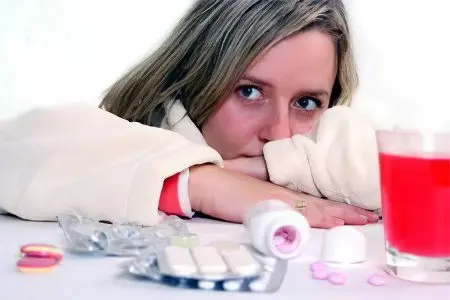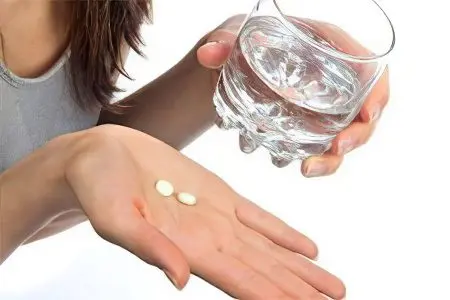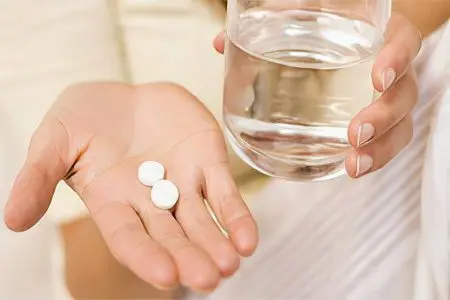Contents
- Is it necessary to take antibiotics?
- Can antibiotics and antivirals be taken at the same time?
- Is it possible to drink antibiotics at a temperature?
- Can I cure a sore throat without antibiotics?
- How often can I take antibiotics?
- After what period of time can I drink antibiotics again?
- How many times a year can antibiotics be taken?
- How soon can I get tested after taking antibiotics?
- What to drink with antibiotics for microflora?
- 10 rules – how to take antibiotics correctly
Is it necessary to take antibiotics?

The drugs of this pharmaceutical group require a balanced approach to prescribing, but there are cases when they cannot be dispensed with. These are bacterial infections that caused an inflammatory process with purulent discharge, tissue damage, and a rise in temperature.
Diseases for which antibiotics are used:
Pneumonia,
otitis media,
Purulent sinusitis,
Streptococcal acute tonsillitis,
paratonsillitis,
epiglottitis,
Exacerbation of chronic tonsillitis,
bacterial angina.
Viral diseases are not treated with antibiotics due to the futility of such measures. It should be remembered that antibacterial drugs are prescribed only by a doctor, taking into account side effects and contraindications.
It is acceptable to take these drugs at the same time if superinfection occurs. This situation occurs during primary viral infection. The invasion of viruses weakens the immune system, against the background of this, pathogenic microflora is activated.
Superinfection occurs during the development of secondary bacterial pneumonia on the background of SARS, or with HIV infection. When a person is infected with HIV, bacterial diseases are also activated.
Is it possible to drink antibiotics at a temperature?

The human body reacts with an increase in temperature to infection with viruses and microbes, to the development of tumor processes and autoimmune diseases. The immune system initiates a similar reaction. Before starting antibiotic treatment, you should find out the cause of hyperthermia. Only a doctor can make an accurate diagnosis.
Pain and sore throat, cough, chills are characteristic signs of influenza and SARS, in 90% of cases caused by viruses, not bacteria. Taking antibiotics with these symptoms is not only useless, but also dangerous – immunity will decrease and beneficial microflora will be destroyed.
If a combination of a viral and bacterial infection is diagnosed, the doctor prescribes antibacterial drugs. Determining this fine line is not easy even for a specialist with a medical background. One of the signs of bacterial infection is hyperthermia, which does not reduce performance during the week, or temperature fluctuations.
When prescribing an antibiotic, the doctor focuses on clinical symptoms and on the results of laboratory tests. If the drug is prescribed correctly, after 1,5-2 days the temperature begins to decrease. The absence of positive dynamics indicates that the antibiotic was prescribed incorrectly and a replacement is required. If the course of treatment is completed too early, the disease may become chronic or relapse.
Can I cure a sore throat without antibiotics?

Treatment of bacterial tonsillitis, which is diagnosed in 90% of cases of this disease, is necessarily carried out with the use of antibacterial drugs. It is caused by a pathogenic bacterium beta-hemolytic streptococcus group A. Symptoms of bacterial tonsillitis: severe pain when swallowing saliva and food, purulent deposits on the tonsils.
Complications of angina when antibiotics are abandoned:
Peritonsillar abscess – a formation filled with pus, causes high fever, acute pain in the throat.
Acute rheumatic fever – affects the brain, heart, bone and joint apparatus.
Acute glomerulonephritis is a violation of the urinary function due to an inflammatory process in the glomeruli of the kidneys.
How often can I take antibiotics?

The frequency of taking these drugs is not regulated. If during the illness, while taking antibacterial agents, the symptoms of the disease do not disappear, there may be a misdiagnosis. Here, it is already required to re-use antibiotics, and to clarify the diagnosis by conducting laboratory tests.
The variety of bacteria that led to re-infection, and their sensitivity to antibiotics, is determined by bacteriological culture of body fluids (urine, feces, sputum, mucous scrapings). If the disease is of a viral nature, even the frequent use of antibacterial agents will not give any result.
3 consequences of frequent use of antibiotics:
It is important to know that the frequent use of drugs in this group will lead to addiction, and in a serious situation they will not affect the causative agent of the disease.
With frequent use, the allergization of the body increases.
Antibacterial agents cannot differentiate “bad” bacteria from “good” ones, and act with the same intensity on pathogenic and beneficial microflora. Therefore, dysbacteriosis becomes a frequent companion of patients who abuse antibiotics. Diarrhea, bloating, and loose stools often result from the frequent use of these drugs.
After what period of time can I drink antibiotics again?
You can generally not make intervals between courses, if necessary. The only condition is the mandatory change of the drug. If an antibiogram was done at the beginning of the disease, then by the end of the first course of treatment it will already be ready, and the appointment will be justified.
How many times a year can antibiotics be taken?
In case of emergency, antibacterial drugs are taken repeatedly, repeating courses of treatment one after another. Naturally, repeated courses of treatment are carried out with various drugs to prevent resistance to bacteria. With frequent courses of treatment, body support is required by taking vitamin preparations, hepatoprotectors, and probiotics.
How soon can I get tested after taking antibiotics?
Control over the effectiveness of treatment is carried out 2-5 days after the end of the course of drug therapy. Bacteriological culture of urine for flora will give objective indicators if it is taken no earlier than 10-14 days after the end of taking antibacterial agents. These drugs have a minimal effect on blood tests – a shift in the leukocyte formula and ESR indicators is possible.
What to drink with antibiotics for microflora?
Normalization of useful microflora is carried out by lacto- and bifidobacteria contained in probiotics and prebiotics. These biological products are not taken simultaneously with antibacterial agents, since the active substance of the drug will destroy beneficial bacteria along with the pathogenic flora. They are used no earlier than 2 hours later, or the flora is restored at the end of the course of antibiotic therapy. It is advisable to take biologics for at least 14 days, ideally up to 30 days. In most cases, the patient’s immunity itself restores the balance of microflora.
10 rules – how to take antibiotics correctly

Medicines should be taken only as prescribed by a doctor. It is important to remember that antibacterial agents are used only in exceptional cases. The main indication for taking them is a severe form of a bacterial infection that the immune system cannot cope with on its own.
Signs of acute bacterial infection:
Purulent process;
Persistent and prolonged hyperthermia;
Changes in the blood formula – pronounced leukocytosis, a shift to the left of the leukocyte formula, an increase in roe;
Deterioration of the patient’s condition after a temporary improvement in well-being.
Viral infection with SARS, influenza, intestinal disorders is not treated with antibiotics.
It is necessary to record information about previously taken antibiotics. Information about previous courses of treatment with antibacterial drugs, the time of admission, diseases, side effects, the presence or absence of allergic manifestations, dosage, is very important. Such data is especially valuable for the pediatrician. Using these data, the doctor will be able to more accurately select drugs if necessary.
No need to insist on prescribing antibiotics when visiting a doctor. It is possible that the doctor, having reinsured himself, will prescribe the drug at the request of the patient. It is possible that such a measure will speed up recovery, but will bring negative consequences. It is also not worth replacing drugs with more “effective and strong” drugs on your own. They may have a different composition and dosage.
Before choosing an antibiotic, you need to pass an analysis for bacterial culture. Determination of the causative agent of the disease by the method of bakposev to determine sensitivity to antibiotics will allow you to accurately select the drug. The only negative is that the study takes from 2 to 7 days.
Strict adherence to the frequency and time of taking the medicine is required. To maintain a constant concentration of the active substance in the patient’s blood, it is necessary to observe the multiplicity and time intervals between antibiotic doses. Taking the drug three times does not mean that it is taken during breakfast, lunch and dinner. This condition means an 8-hour time interval between taking the medicine. Double reception – 12-hour period of time.
The term for taking antibiotics is determined by the doctor. On average, this period is 5-7 days, in some cases it reaches 10-14 days. Long-acting antibacterial drugs (Sumamed, Hemomycin, Azithromycin, Ecomed, Azitrox, Azitsid, Zi-factor) are taken once a day for 3-5 days. In some cases, the following scheme is used: a 3-day intake of the drug with a 3-day break, 3 times.
The course of treatment cannot be interrupted. Even if the patient feels a persistent improvement in the condition, the medication should not be interrupted. The course of treatment is extended for a period of 2-3 days after recovery. And, conversely, if the effect of taking the drug for 3 days is not felt, then the causative agent of the disease is not sensitive to this antibiotic and should be replaced.
You can not change the dosage prescribed by your doctor on your own. Too little dose causes bacterial resistance, too much leads to overdose and side effects.
The intake of antibiotics depends on the time of the meal. Instructions for the use of antibacterial drugs clearly defines their dependence on the time of eating:

While eating;
1-1,5 hours after a meal or an hour before a meal;
The medicine is washed down only with clean non-carbonated water;
Most antibiotics should not be taken with tea, coffee, fruit or vegetable juices, milk or dairy products, although there are exceptions to this rule.
Be sure to take probiotics during antibiotic treatment.. To restore the normal balance of the intestinal microflora, probiotics are taken: Linex, Acipol, Narine, Rela Life, Rioflora-Immuno, Gastrofarm. The need for such measures arises, since antibiotics destroy beneficial microflora. An additional measure is the use of dairy products. For the best effect, you should take probiotics in between taking antibacterial drugs or after a course of treatment.










